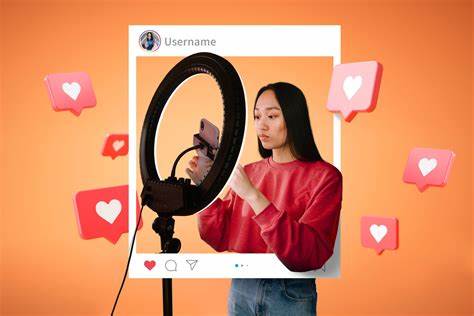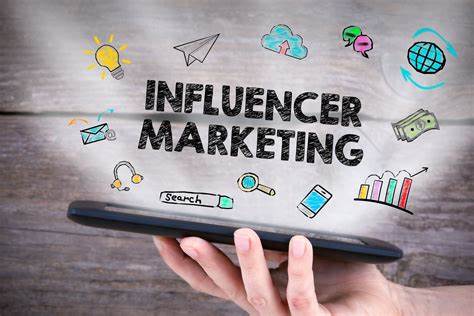In today’s digital-first world, influencer marketing has emerged as a powerful tool for enhancing brand visibility. By partnering with influencers who have a dedicated and engaged audience, businesses can reach potential customers more authentically than through traditional advertising. From small startups to established companies, leveraging the power of influencers has proven to be a game-changer. This guide will walk you through the essential steps to craft impactful influencer marketing strategies that boost your brand’s presence, increase awareness, and drive customer engagement in a competitive market.
Understanding the Power of Influencer Marketing
Influencer marketing harnesses the trust and influence of individuals with a strong online presence. These influencers act as brand ambassadors, promoting products and services to their followers in ways that feel genuine and relatable. This method not only helps brands reach a wider audience but also fosters stronger connections by tapping into the influencer’s authenticity and credibility.
Identifying the Right Influencers for Your Brand

Focus on Niche Relevance
The first step is identifying influencers whose audience aligns with your target market. Collaborating with someone in your niche ensures that their followers are more likely to resonate with your product or service.
Analyze Engagement Metrics
Look beyond follower counts and examine metrics like comments, shares, and likes. High engagement rates often indicate a loyal and interactive audience, which is crucial for achieving meaningful results.
Evaluate Content Quality
Pay attention to the influencer’s style, tone, and content quality. Their personal brand should complement your brand’s image to create a cohesive and impactful campaign.
Crafting an Effective Influencer Marketing Strategy
Set Clear Goals
Define what you hope to achieve through influencer collaborations. Whether it’s increasing website traffic, generating leads, or building brand awareness, setting specific objectives ensures that your strategy remains focused.
Choose the Right Collaboration Model
Select an appropriate partnership format based on your goals. Popular options include sponsored posts, product reviews, giveaways, and long-term brand ambassadorships.
Provide Creative Freedom
Influencers know their audience best, so give them the flexibility to present your brand in a way that feels natural and authentic. Avoid over-controlling the message, as this can diminish the effectiveness of the campaign.
Track Campaign Performance
Monitor key performance indicators (KPIs) such as reach, impressions, and conversions. These metrics help you evaluate the success of your campaign and refine future strategies.
Leveraging Different Types of Influencers
Mega Influencers
With millions of followers, mega influencers offer vast reach but often come at a higher cost. They are ideal for large-scale brand awareness campaigns.
Macro Influencers
These individuals have a follower count ranging from 100,000 to 1 million. They provide a balance of reach and affordability, making them suitable for medium-sized campaigns.
Micro Influencers
Micro influencers, with 10,000 to 100,000 followers, tend to have highly engaged audiences. Their niche expertise and authentic connections often lead to better conversion rates.
Nano Influencers
These are everyday individuals with fewer than 10,000 followers but a loyal and localized audience. Collaborating with nano influencers is cost-effective and can yield impressive results within specific communities.
Optimizing Campaigns for Social Media Platforms
Instagram Strategies
Instagram remains a top choice for influencer marketing due to its visual appeal and interactive features like Stories and Reels. Focus on creating visually engaging content that highlights your brand in a natural way.
TikTok Campaigns
TikTok’s algorithm-driven content discovery makes it ideal for reaching new audiences. Partner with influencers to create entertaining and shareable videos that showcase your product’s unique features.
YouTube Partnerships
YouTube allows for in-depth content like tutorials, reviews, and unboxings. Collaborating with influencers on this platform provides an opportunity to tell a comprehensive story about your brand.
Twitter Promotions
Twitter is effective for quick promotions, trending hashtags, and live conversations. Work with influencers to create buzzworthy tweets that encourage shares and discussions.
Facebook Collaborations
Facebook’s diverse audience makes it suitable for a wide range of campaigns. Leverage its ad tools to amplify influencer-created content for maximum visibility.
Best Practices for Building Long-Term Partnerships
Foster Genuine Relationships
Building trust with influencers is essential for creating authentic campaigns. Invest time in developing relationships by engaging with their content and maintaining open communication.
Offer Value
Provide influencers with value beyond monetary compensation. This could include exclusive access to new products, invitations to events, or opportunities for co-creation.
Ensure Transparent Disclosures
Adhere to advertising guidelines by ensuring influencers clearly disclose sponsored content. Transparency builds trust with both the influencer’s audience and regulatory bodies.
Encourage Feedback
Treat influencers as collaborators by inviting their input on campaign strategies. Their unique insights can help refine your approach and improve results.
Overcoming Challenges in Influencer Marketing
Budget Constraints
Not every brand has the budget for high-profile influencers. Focus on micro or nano influencers who offer affordable yet impactful collaborations.
Measuring ROI
Quantifying the return on investment can be challenging in influencer marketing. Use tracking tools, unique promo codes, and custom URLs to monitor the campaign’s impact.
Ensuring Authenticity
Avoid overly scripted content that feels forced. Work with influencers who genuinely believe in your brand and can communicate its value organically.
Case Studies: Brands That Excelled

Glossier’s Micro Influencer Strategy
Beauty brand Glossier leveraged micro influencers to create a community-driven campaign. By encouraging user-generated content, they amplified brand visibility and strengthened customer loyalty.
Daniel Wellington’s Instagram Success
The watch brand Daniel Wellington collaborated with lifestyle influencers to promote their products. The strategy involved discount codes and aesthetically pleasing content, which drove massive sales and online buzz.
The Role of Data in Influencer Marketing
Data-driven insights are essential for refining influencer campaigns. Use analytics tools to track audience demographics, engagement trends, and campaign performance. This information helps you identify what works and where improvements are needed, ensuring a higher return on investment.
Future Trends in Influencer Marketing
Artificial Intelligence Integration
AI-powered tools are revolutionizing how brands identify influencers, predict campaign outcomes, and personalize collaborations. Staying updated with these advancements ensures your strategies remain competitive.
Rise of Virtual Influencers
Digital avatars and virtual influencers are gaining popularity for their creative appeal and controllability. This emerging trend opens new possibilities for brands to engage audiences in unique ways.
Final Thoughts
Influencer marketing offers unmatched opportunities to enhance brand visibility, build trust, and drive customer engagement. By partnering with the right influencers, crafting authentic campaigns, and leveraging data-driven strategies, businesses can achieve impactful results. Whether you’re aiming to expand your audience or solidify customer loyalty, influencer marketing is a powerful tool to help your brand stand out in a crowded digital landscape.

Leave a Reply